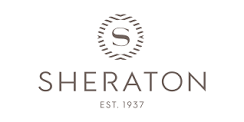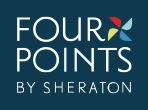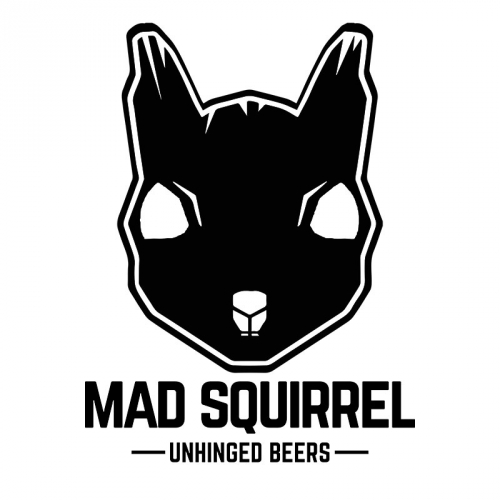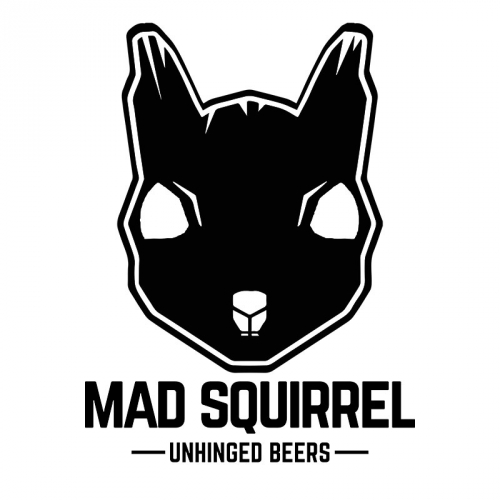Title Page
-
Area Conducted
-
Conducted on
-
Prepared by
-
Location
-
Attendees
Personal hygiene procedures are followed
-
Personal hygiene must include:<br>• No bare hand contact with ready-to-eat-foods<br>• No eating, drinking, smoking, or tobacco use in areas with exposed food, food contact surfaces,<br>food contact packaging<br><br>o It is acceptable if closed beverage containers (e.g., sports bottles, cups with lids, cups<br>with lids and straws) are present as long as stored below or adjacent to work stations<br>so they cannot contaminate the food and food contact surfaces<br><br>• All dedicated hand washing sinks are stocked (disposable towels or air dryer, soap, trash can<br>nearby), hot and cold water supplied, and accessible (not blocked, used for food prep)<br><br>The following additional hygiene measures must be followed, but will not be evaluated during the third<br>party evaluation process:<br><br>• All associates washing hands following:<br>o Touching face, hair<br>o Using restrooms<br>o Touching raw food product<br>o Changing gloves<br><br>• No associates working who display symptoms of illness:<br>o Diarrhea<br>o Vomiting<br>o Fever<br>o Sore throat with fever<br>o Jaundice (yellowing of the eyes)
Cold potentially hazardous foods maintained at 41F (5C) or below in all cold holding<br>devices
-
Cold foods must be held at or below 41F (5C)
Select cold unit/units (walk-in, reach-in, cold holding units, salad bars, ice wells)Check (2) temperatures per unit
If hotel uses optional Time in Lieu of Temperature procedures:
• When potentially hazardous food products are on display (e.g., buffet (boiled eggs, salmon),
omelet cooking station (ham, bacon)) and temperature is out-of-range:
o Ask to see HACCP Form A-20
o Verify food product evaluated is:
▪ Listed on HACCP Form A-20
▪ "Time item is displayed" listed is less than (4) hours from current time -
Mark No if any of the following:
-
• (2) or more products are 42-55F (6-13C)
-
• Any product is over 55F (13C)
-
• Time in Lieu of Temperature is used and no food items are documented
-
• Time in Lieu of Temperature is in place and HACCP Form A-20 is not used
-
• Time in Lieu of Temperature is in place and log entry not filled out correctly
-
• Time in Lieu of Temperature is in place and documentation not 90%+ complete
Dishwashing machines properly maintained and operated
-
Test using a thermometer or strips that are not damaged
For Low temp machines:
• Test only once using non-damaged strips used by hotel to test sanitizer level
• Run machine with full rack of equipment, plates or glasses
• Immerse strip for exactly the specified time in water on plate, glass or equipment
o Do not agitate the test strip
o Do not contact foam on top of the solution
• Verify concentration of chemical sanitizer is at proper level (e.g., Chlorine: 50-100 ppm) as
indicated on test strip scale
For High temp machines:
• Test only once using a thermometer or strips
• Non-chemical sanitizing in a dishwashing machine must be at 160F (71C) on dish surface
• If machine has not been used recently, run it through a cycle or two (2) before testing
• Test High temp machines:
o Attach a 160F (71C) test strip, heat tape using a plate or fork or use a waterproof
thermometer.
o Run tape or waterproof thermometer through the machine
o Check heat tape for activation or thermometer for correct temperature of the food
contact surface in the machine
Randomly select (1) dish machine in the food and beverage area (All brands except GH)
Randomly select (3) dish machines in the food and beverage areas (GH) -
Mark No if any of the following:
-
• High temp machine - heat tape is not activated or required temperature is not achieved
-
• Low temp machine - chemical sanitizer not in correct range
-
• Low temp machine - hotel does not have a method to test the dish machine sanitizer (e.g., test
-
strip)
-
• Dish machine is not functioning or out of order
Ice Machines are clean and in good condition
-
Ask Engineering associate to remove inspection panel of ice machine to observe cleanliness of all
ice/water contact surfaces
Check ice contact areas of bins, doors, drop guards, interior of ice machine, gaskets and ice scoops -
Mark No if any of the following:
-
• Interior of ice machine dirty
-
• Mold, mildew or fungus on ice/water contact areas
-
• Rust on the inside of ice machine or ice/water contact areas
-
• Access to inside of ice machine is not available
Facility is clean and in good condition
Facility is clean and in good condition
-
Check baseboards, cabinets, ceilings, counters, doors, drains, drain covers, floors (grout lines), equipment, grease traps, hardware, mats, outlet covers, switch plate covers, tables, vents, walls, and windows in all food production, food service, food storage and food transportation areas of the operation.
There should be no evidence of pests including:
• Active cockroaches or rodents
• (5) or more pests in a small area (e.g., (6) fruit flies in drain)
• Evidence of pests breeding
• Birds nesting inside building
• Trailing ants in food preparation area
• Dead pests -
Mark No if any of the following:
-
• (5) or more cleanliness or condition issues were observed or encountered
-
• Any evidence of pests
Cross-contamination prevention procedures are followed
Cross-contamination prevention procedures are followed
-
Hotel must store items with the highest cooking temperature requirement on the bottom shelf of the refrigerator and place food items with lower cooking temperature requirements above these items.
-Food storage and preparation areas must not be located below physical hazards that could fall into food -Examples of such hazards include but are not limited to: raw animal products above ready-to-eat foods, commingling raw animal species, and thumb tacks/staples.
-Chemicals cannot be stored above food or food contact surfaces -Food cannot be stored or thawing in a dedicated hand washing sink -
Mark No if any of the following are observed or encountered:
-
• Raw animal products stored above or commingled with ready-to-eat products
-
• Food items with higher cooking temperature requirements stored over food items with lowercooking temperature requirements
-
• Physical hazards that would present an imminent health hazard, such as push pins used directly above food prep surfaces
-
• Chemicals stored above food or food contact surfaces
-
• Cross-contamination or potential for cross-contamination exist with food or food contact surfaces
-
• Food stored or thawing in a dedicated hand washing sink
Temperature Logs and Food Safety Training Documentation
-
The appropriate managers are Food Safety Certified through an approved program.
Review documentation from last inspection, re-inspection, owner/management company change or
opening/re-opening date forward
• Hotel must provide documentation of owner/management company change
Management staff must minimally complete management food safety certification
• Minimum number of Food Safety certified management (positions vary by hotel, equivalents
acceptable):
(AUTO, DH, GH, JW, LC, LM, MH, NB, PH, RC, RCC, RH, SHER, SR, TRB, W,
WSTN): Assistant Engineer, Banquet Chef, Chief/Executive Steward, Culinary
managers, Director of Engineering, Executive Chef, Restaurant Managers, Sous Chefs
• Current (5 years from validation date), from an approved certification training program (in-person
or online)
Ask to see certificates of managers in current position at least 60 days:
• (AUTO, DH, GH, JW, LC, LM, MH, NB, RC, RCC, RH, SHER, SR, TRB, W, WSTN):
Select (2) Management staff from the list above. -
Mark No if any of the following:
-
• Required staff not certified in approved program
-
• Certificates not on file and available for review
-
• Certificates older than 5 years
-
• (US): Certificates not from approved program
-
Culinary managers are properly trained in food allergy awareness and know how to avoid cross contact during food preparation and service.
Food allergy training must minimally be completed by:
• (AUTO, CY, DH, GH, JW, LC, LM, MH, PH, RC, RCC, RI, RH, SHER, SR, TRB, W, WSTN): (2)
Culinary managers
• (AC, AH, ELMT, FF, FP, MX, SHS, TPS): (1) Manager
Any food allergy training is acceptable from any date or year
• Examples include:
o AllerTrain or AllerTrain Lite by Menu Trinfo LLC
o On-line, self-directed or classroom training
Ask which managers are trained in food allergy training
Ask to see training certificates of managers in current position at least 60 days:
• (AUTO, CY, DH, GH, JW, LC, LM, MH, PH, RC, RCC, RI, RH, SHER, SR, TRB, W, WSTN): (2)
Management staff
• (AC, AH, ELMT, FF, FP, MX, SHS, TPS): (1) Manager -
Mark No if required number of managers do not have proof of training
-
4) Refrigerator and freezer temperature logs (HACCP Log A-3) are completed and on file for the past
3 months.
Hotel may use any form (electronic or paper)
If hotel cooks, holds, re-heats, refrigerates, freezes, or cools food the proper logs/forms must be completed
Log must minimally record:
• Date
• AM internal temp
• PM internal temp
• Corrective Action (if temperature out-of-range)
o Refrigerator temperatures above 41F (5C) are considered out-of-range
o Freezer temperatures above 5F (-15C) are considered out-of-range
Select (1) refrigerator and (1) freezer
Select (1) week (7 consecutive days) within the past 3 months -
4) Refrigerator and freezer temperature logs (HACCP Log A-3) are completed and on file for the past
3 months.
Hotel may use any form (electronic or paper)
If hotel cooks, holds, re-heats, refrigerates, freezes, or cools food the proper logs/forms must be completed
Log must minimally record:
• Date
• AM internal temp
• PM internal temp
• Corrective Action (if temperature out-of-range)
o Refrigerator temperatures above 41F (5C) are considered out-of-range
o Freezer temperatures above 5F (-15C) are considered out-of-range
Select (1) refrigerator and (1) freezer
Select (1) week (7 consecutive days) within the past 3 months -
Mark No if any of the following:
-
• Corrective action field not completed
-
• Documentation not available for review
-
• Documentation not 90%+ complete
-
Log entry(s) not filled out correctly
-
• Temperatures out of guidelines have not corrective actions
-
5) Temperature Logs (HACCP Log A-1) for cooking, holding and reheating food items are completed
and on file for the past 3 months.
Log must minimally record:
• Date
• Food item
• Time
• Temperature
• Corrective Action (if temperature out-of-range)
o For cooking temperatures: temperatures below minimal internal cooking limits listed on
Log A-1 are considered out of range
o For reheating temperatures: below 165F (74C) are considered out of range
o For holding temperature: hot holding below 135F (57C) or cold holding above 41F (5C)
are considered out of range
Select (1) kitchen and (1) meal period for 1 week (7 consecutive days) within the past 3 months
Review documentation and check all fields are correctly completed for selected entries -
Mark No if any of the following:
-
• Corrective action field not completed for out-of-range temperatures
-
• Documentation not available for review
-
• Documentation not 90%+ complete
-
• Log entry(s) not filled out correctly
-
• Temperatures out of guidelines have no corrective actions
-
undefined
-
6) Food Cooling Logs (HACCP Log A-2) are completed and on file for the past 3 months
Do not select this documentation item if hotel does not re-heat food
Hotel may use any form (electronic or paper)
If hotel cooks, holds, re-heats, refrigerates, freezes, or cools food the proper logs/forms must be completed
Log must minimally record:
• Date
• Food item
• Temp at start
• Temp #1 (after 1 hour)
• Temp #2 (after 2 hours)
• Temp #3 (after 4 hour)
• Temp #4 (after 6 hours)
• Corrective Action (if temperature out-of-range)
o Temp #2 (after 2 hours) above 70F (21C) are considered out-of-range
o Temp #4 (after 6 hours) above 41F (5C) are considered out-of-range
Select (3) cooling log entries within the past 3 months
Review documentation and check all fields are correctly completed for selected entries -
Mark No if any of the following:
-
• Corrective action field not completed for out-of-range temperatures
-
• Documentation not available for review
-
• Documentation not 90%+ complete
-
• Log entry(s) not filled out correctly













